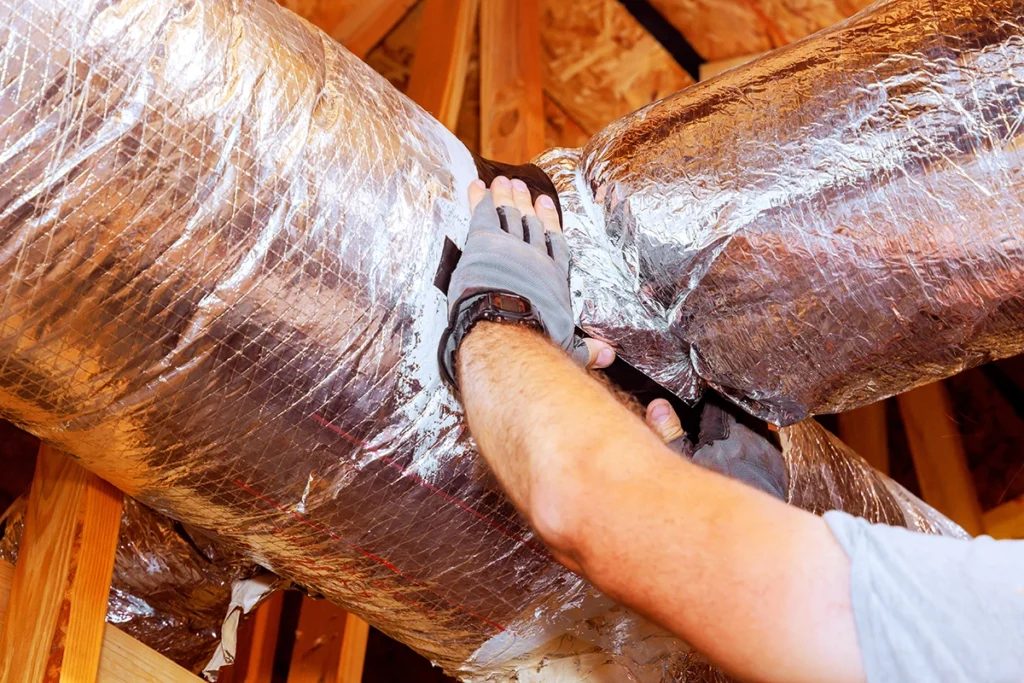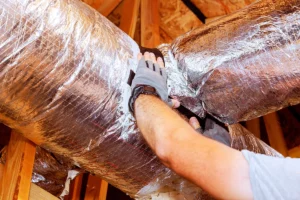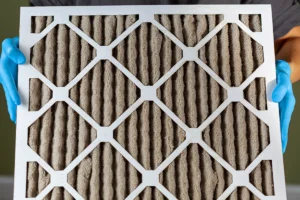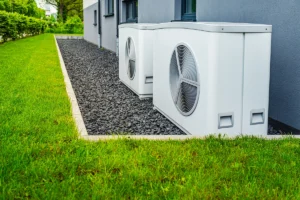I can’t tell you how many times someone has asked me, “So… what is CFM, and why does it matter for my house?” In our HVAC world, it’s just part of our everyday language. But for most homeowners, it sounds like one of those technical terms you don’t hear outside of a repair visit.
Here’s the thing: once you know what CFM is, you’ll start noticing how it affects your home’s comfort, your utility bills, and even your air quality. And it’s not complicated — I promise.
CFM stands for cubic feet per minute. All that means is how much air your heating or cooling system moves in one minute. When it’s right, your home feels balanced. When it’s wrong… well, that’s when you get uneven rooms, noisy vents, and higher bills.
What Is CFM and Why Does It Matter?
If we’re talking in plain terms, CFM is just airflow. Imagine water flowing through a hose. If the flow is weak, it takes forever to fill a bucket. If it’s blasting too hard, it splashes everywhere. Your HVAC system is no different.
Too little airflow and your rooms can feel stale. Your system might also run longer than necessary, which means more wear and tear. Too much airflow? You could get vents that whistle, drafts you don’t want, or ductwork that’s under more stress than it should be.
According to Energy.gov, airflow directly impacts both efficiency and performance — and I’ve seen it firsthand in dozens of homes.
Measuring CFM in Real Life
When we measure CFM in your home, we’re literally checking how much air passes through your system every minute. We don’t guess. We use tools like anemometers or flow hoods.
Your “sweet spot” number depends on the size of your system, how your ducts are set up, and even where you live. I’ve been in homes where a small blower fan just couldn’t push enough air, and others where an oversized system left certain rooms freezing while others were warm.
What Is CFM When Sizing a System?
When you’re getting a new HVAC system, airflow is part of the sizing equation. A common starting point is about 400 CFM per ton of cooling capacity. But humidity levels, insulation, and even how sunlight hits your home can change that number.
Signs Your CFM Might Be Wrong
You might not know your exact CFM, but your home will tell you if it’s off:
-
Rooms that are too hot or too cold compared to others
-
Weak airflow from vents
-
Loud vent noises — whistling, rushing, or rattling
-
A spike in your utility bill
-
Dust showing up faster than you can clean it
If two or three of those sound familiar, it’s time to have it checked.
Common Causes of Bad Airflow
In my experience, the usual suspects are:
-
Clogged air filters (I’ve seen filters so dirty they looked like rugs)
-
Ductwork that leaks or is too small
-
A blower motor that’s struggling
-
Vents that are blocked or closed
-
A system that was sized wrong from the start
The good news? Most of these are fixable without replacing the whole system.
How We Fix CFM Problems

When we check the CFM in a home, we’re not just taking a reading. We’re figuring out why it’s off and how to make it right. That might mean sealing duct leaks, cleaning coils, adjusting fan speeds, or in rare cases, resizing the equipment.
Sometimes, we’ll suggest adding a smart thermostat so you can fine-tune airflow throughout the year. According to ENERGY STAR, homeowners can save around $100 a year by using a certified smart thermostat.
Indoor Air Quality
Good airflow isn’t just about staying warm in the winter or cool in the summer. The right CFM lets your air filter do its job — trapping dust, pet hair, pollen, and whatever else floats through your air. It also helps keep humidity levels where they should be, which makes mold growth far less likely.
When airflow is unbalanced, air feels stale, and pollutants keep circulating. You might not notice it right away, but over time, you will.
Adjusting CFM with the Seasons
Here’s something most people don’t think about: your ideal CFM can change during the year. In humid summers, slightly lower airflow can help your system pull more moisture from the air. In colder months, a bit more airflow can spread heat evenly.
We make these seasonal tweaks for customers who want that “just right” feel no matter what the weather’s doing.
The Bottom Line
If you’ve been wondering what is CFM, it’s just the measure of how much air moves through your HVAC system every minute. But don’t let the simplicity fool you — getting it right is a game-changer for comfort, energy efficiency, and even your health.
At Sub Zero Temp Control, we don’t just look at equipment — we look at airflow. If you’re in Vancouver, WA, or the surrounding areas, we can test, adjust, and fine-tune your CFM so your home always feels exactly the way you want it to. Contact us today to schedule your airflow check and make sure your system is running at its best.
Because when your airflow is balanced, everything else in your home just works better.
Read Next: AC Unit Not Blowing Cold Air: Common Causes and Solutions








